Was it really only six weeks ago that I was posing for selfies with attractive young Brazilians who were telling me how delighted they were to meet me? Apparently, according to the metadata in my own photographs, it really was. What a very different world Mid-March now seems, only 40-something days ago: coronavirus was a troubling dark cloud on the horizon, but Brazil had seen very few cases, and Brazilians, who are a very huggy-touchy people, were being as huggy-touchy as ever, hugging, touching and giving out those big Brazilian handshakes that involve grasping the other person’s thumb, to the intense confusion of reticent, not very huggy Britons like me, who cannot work out where to put their fingers. The pubs and bars were seething, the beaches were packed. More young women wanted to stand next to me and have their photographs taken than I have ever had in my life – OK, only three, but that’s still three more than absolutely none.
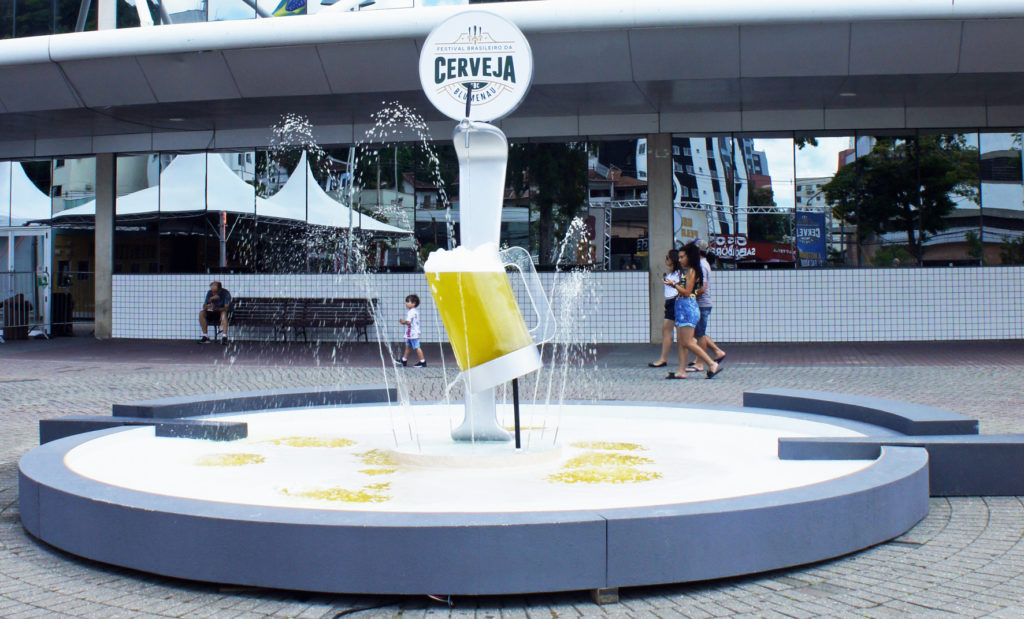
I was in Brazil as one of three Britons — Melissa Cole and Ron Pattinson being the others — invited to be judges at the 2020 Brazilian Beer Contest, which involved 100 or so judges evaluating more than 3,000 beers in almost 150 different styles from more than 630 Brazilian breweries. Most of those judges were from Brazil, but others had been invited from Japan, the US, Belgium, Germany and Canada, as well as elsewhere in Latin America. The Brazilians, of course, were perfectly able to judge their own beers, but bunging in a few foreigners always adds – not glamour, certainly not in my case, but maybe a touch of extra credibility to sceptics who might otherwise feels that only Brazilians judging Brazilians was a little too incestuous. We were also there to add to the line-up in several sessions of seminars that accompanied the beer festival which followed the judging, all part of the educational service. Whatever the reason, I was delighted to be there.
The contest was in Blumenau, a city of 350,000 people 450 miles south-west of Rio de Janeiro in Santa Catarina state that is, effectively, Beer Central in Brazil. It was founded by a group of German settlers led by Hermann Blumenau in 1850, it has a long tradition of brewing and today it is home to the biggest Oktoberfest outside Munich, bringing in 700,000 people every year; one of the first Brazilian craft breweries, Eisenbahn, founded in 2002 (and now owned, yawn, by Heineken); and the Escola Superior de Cerveja e Malte, Brazil’s leading brewing school. It is also the home of the Catharina Sour, the first Brazilian beer style approved by the BJCP, of which more later. The city is also now promoting itself as the centre of the Vale do Cerveja, Beer Valley, which involves a dozen breweries in the local “county”, the Vale do Itajaí, also known, because of the large number of German and Italian settlers in the region (there are figures suggesting up to 50 per cent of locals have German ancestry), as the Vale Europeu, “European Valley”.
Brazilians have become hugely enthusiastic about craft been in the past decade or so, like much (all?) of the world, and like much of the world they are thirsty for knowledge as well as beer. To find this knowledge they turn to writers and educators from countries with a more traditional grounding in beer than their own, which is why, to my intense amusement, I was able to find in a Blumenau bookshop books on beer by the Canadian writer Stephen Beaumont, who was another judge at the contest, by Melissa and by our own dear Mark Dredge, all translated into Portuguese. I’ve not had one of my own books put into Portuguese yet, but the picture requests I got in Blumenau suggested that my books in English, and this blog, have at least a small Brazilian audience, which is at least slightly head-swelling. There were certainly far better known people than me among the judges, though, such as the legendary Pete Slosberg, the man behind what in the 1990s was a superstar in the American craft beer market, Pete’s Wicked Ale, but which is now pretty much forgotten. I was amazed to discover that Pete seemed almost as delighted to meet me and Ron as I was to meet him – I drank a lot of Wicked Ale at one time – and was aware of our work.

Of course, the mainstream Brazilian beer market is still dominated by big brands – this is the home of Ambev, Brazil’s biggest company, which makes up a substantial slice of AB InBev, the world’s biggest brewer, and its brands, including Antarctica, Brahma and Skol (which comes from Alloa, as you know), are ubiquitous. And a total of 1,000 or so craft beer breweries in a country of 210 million people is, these days, not that many.
But like many other countries that have taken to craft beer in a big way with not much of a tradition of making anything other than light lagers, the eagerness of Brazil’s new small brewers to try anything and everything is delightful. At the table I was in charge of for the judging, we kicked off with beers made with sake yeast, following that with beers in the style of Finnish sahti (one of which was so piney it was like drinking Dettol), then American-style amber light lager (only one of which was actually amber), Dunkel Weizen, Irish red ale (a made-up style, but let’s not have that argument now), brown ale, export stout … you’re getting the picture.
There was no surprise at the most popular style to be entered into the competition – IPA, at 235 different labels. But the second most popular beer style was Catharina Sour, with 157 examples entered for judging, up from just 58 in 2018, suggesting that today at least a quarter of all Brazilian breweries are making a beer that, effectively, only came into existence four years ago.
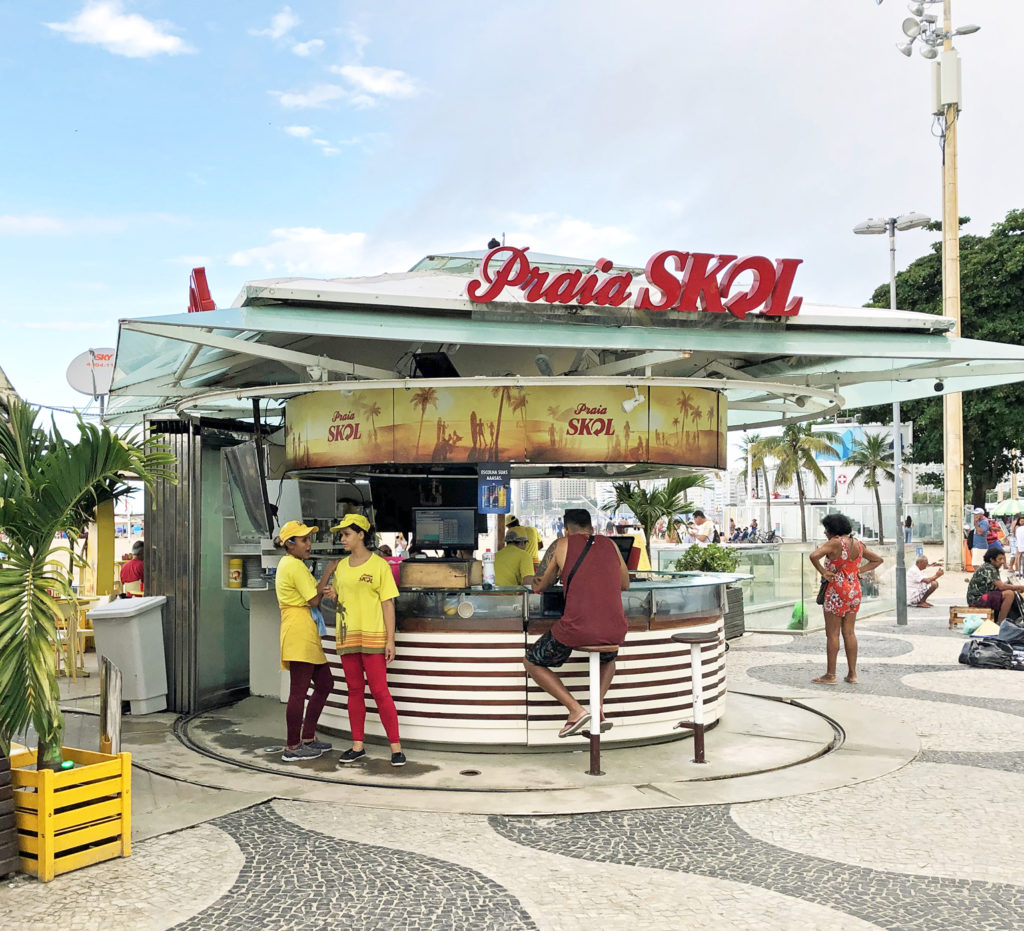
So what is a Catharina Sour, and how and why did it begin? Why, if it comes from Santa Catarina state, is it spelt Catharina? And why is it so popular among Brazilian brewers? Fundamentally it’s a pale, lowish-gravity (4 per cent abv or a little above), lightly hopped, low bitterness kettle-soured wheat beer related to Berliner Weisse, and flavoured with tropical/semi tropical fruits added to the fermentation vessel. A good Catharina Sour will be only lightly tart (having undergone just a day’s souring before the wort is given a normal brewing process), well-carbonated, and refreshing. Others in Santa Catarina had been making lightly soured fruit beers from around 2014, but the urtyp Catharina Sour was brewed by the Cervejaria Blumenau in 2016 with peaches, and called Catharina Son of a Peach in memory of the brewers’ grandmother, who was named Catharina, and who was famed, in her family at least, for the excellence of her peach tarts.
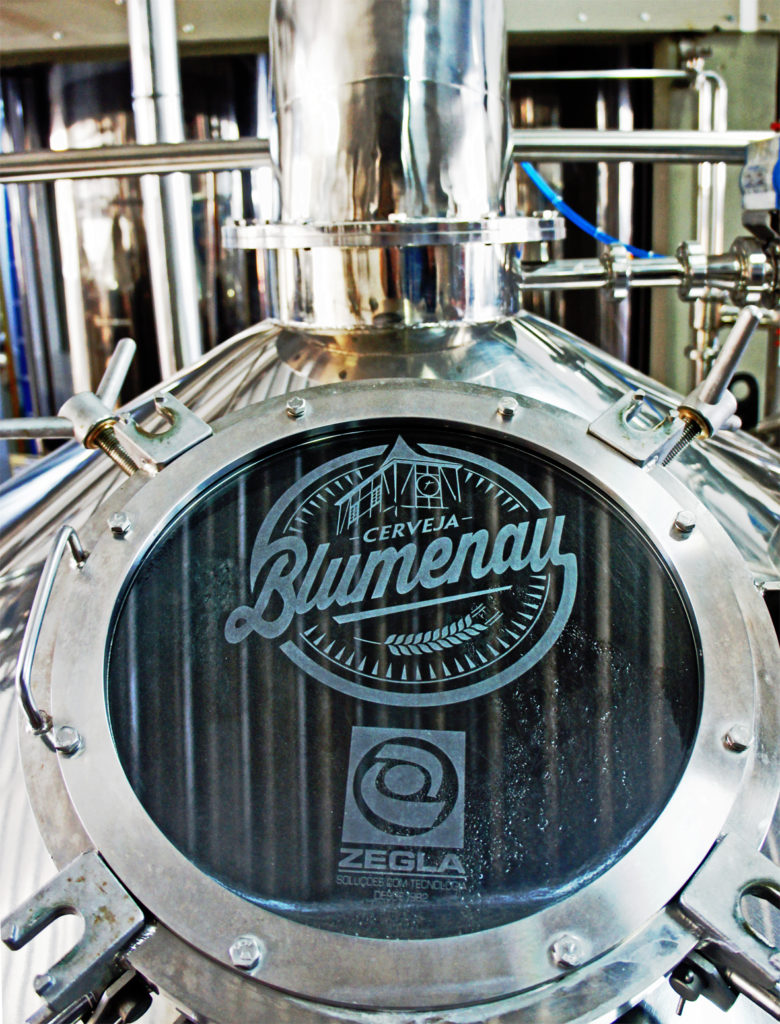
Brewers in Santa Catarina swiftly picked up on the idea, and, in honour of the beer that inspired everybody else – and also because they recognised that it represented excellent branding – called their examples Catharina Sours. Richard Westphal Brighenti, who runs the Lohn brewery in Lauro Müller, a town 100 miles south of Blumenau, says in his book Fazemos Cervejas, “We make beers”, published late last year (which he was kind enough to give me a signed copy of) that before Son of a Peach arrived, brewers in Santa Catarina were already making sour fruited beer in tanks, and selling it as “Berliner Weisse with fruit”. But this was confusing for consumers and technically wrong anyway, since Berliner Weisse was never made with fruit.
The Lohn brewery, for one, brewed a “Berliner Weisse” flavoured with an addition of the local grape variety, the Uva Goethe, but drinkers failed to pick up on it (in part, it appears, because Lohn was selling the beer in 500ml bottles, and 330ml ones were more suited to the image required). A meeting of the Associação Catarinenses das Cervejarias Artesanais, the Santa Catarina Artisanal Brewers Association, in November 2016 in the Liffey brewpub in Palhoça, just south of Santa Catarina’s capital, Florianópolis, discussed the increasing popularity among brewers locally of such sour fruit beers, and the need to find a name for them that would be self-explanatory both for producers and, more importantly, drinkers. The unanimous decision was to call them Catharina Sours.
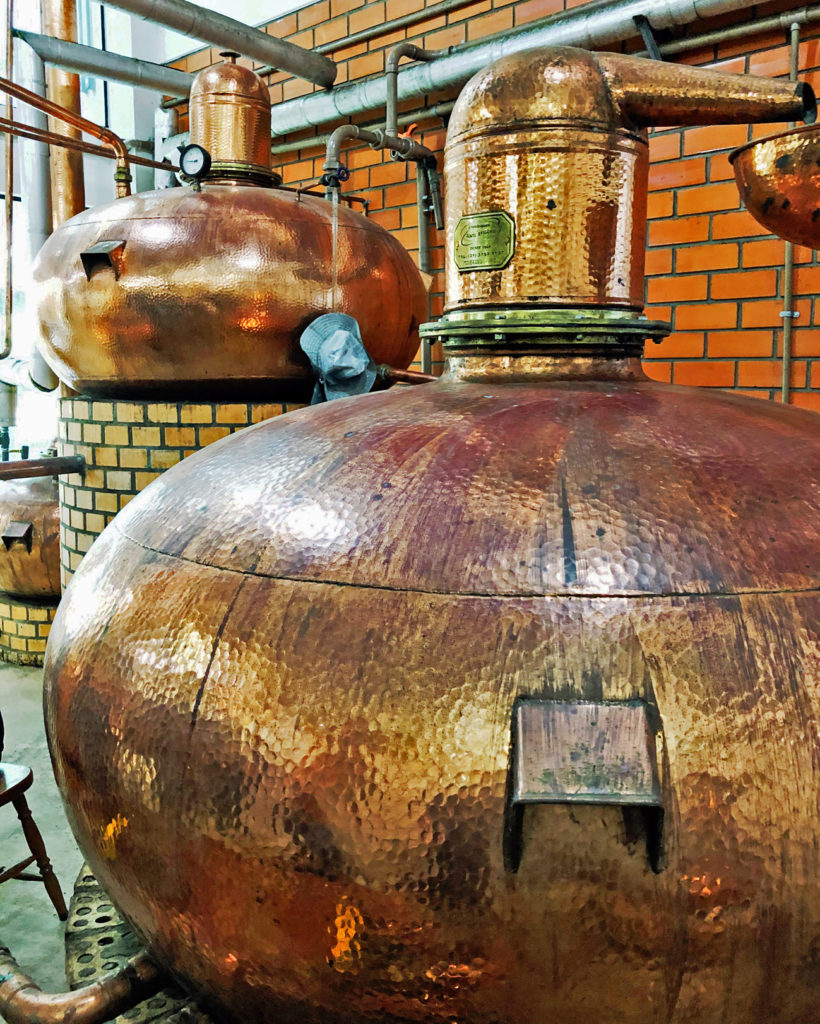
According to Richard, the Catharina Sour style was not so much invented as something that “manifested” itself, springing from the receptivity of Brazilian drinkers to new flavours, the receptivity of sour beers to fruit flavours, and the amazing diversity of fruits that grow in Brazil, both native and introduced. You can now find Catharina Sours made with such Brazilian fruits as jabuticaba (the Brazilian Grape Tree), butiá (a type of palm), grumichama (the Brazilian Cherry), passionfruit (called maracujá in Brazil) pineapples (originally from Brazil) and guaraná, as well as non-native fruits including papaya, blackberries, raspberries, blueberries, mangoes, kiwifruit, bergamot oranges – if it’s fruity, it can stand duty.
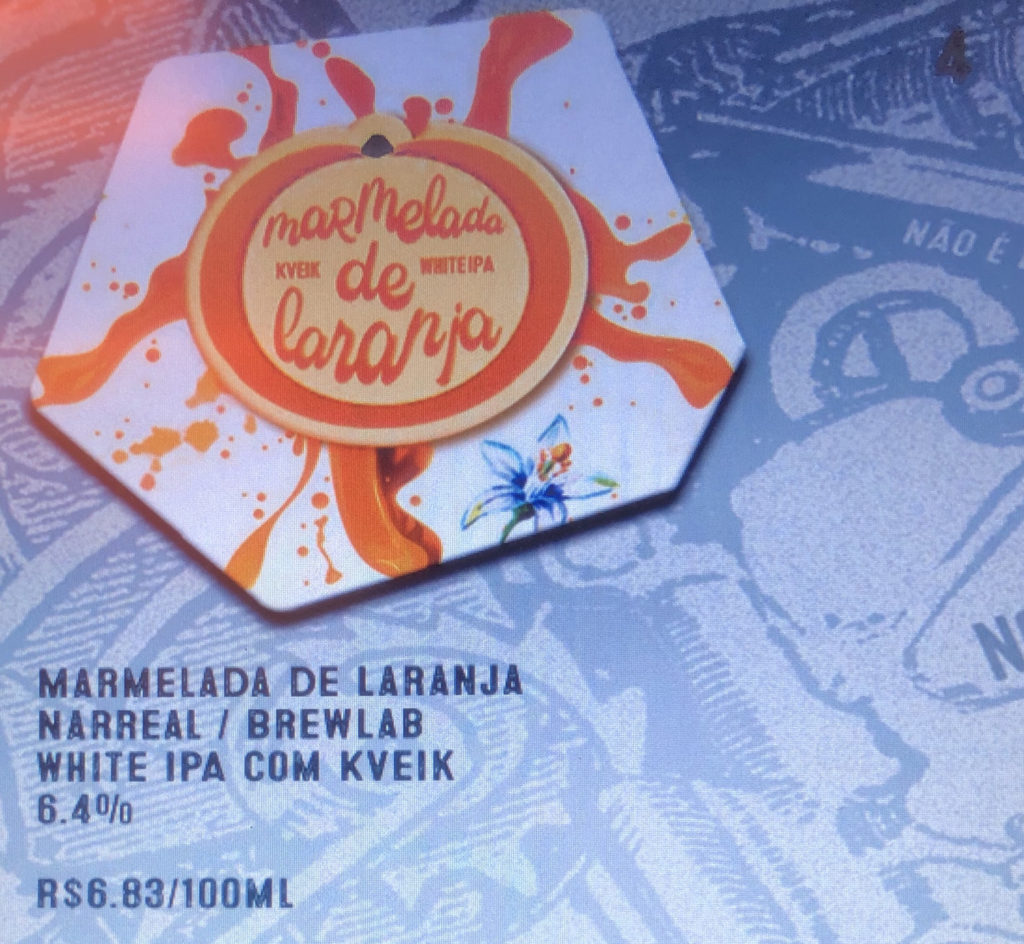
Patriotic Brazilian beer fans can thus Drink Local – and in an era where any “local” beer development becomes global almost as soon as it is discovered (see eg kveik: it was deeply ironic to find a “kveik IPA” on sale in a bar in Rio de Janeiro less than a fortnight after I had been in Norway for the launch of a campaign to get kveik recognised as part of an “intangible Norwegian cultural heritage”) it’s possible, I think, to argue that everybody needs a beer they can call their own, that is rooted in their traditions, their produce, their countryside, and the Brazilians are lucky compared to other “new” brewing nations in having had Catharina Sour manifest itself, to have it become Brazil’s contribution to the world of beer, and be well on the road to becoming part of the nation’s own intangible cultural heritage. At the same time Brazil’s natural assets include a mass of other possibilities for developing new styles and tastes in beer, not least the many native woods, some of which can give amazing flavours to beers matured using them. There is still much more experimenting, and development, to come from Brazil’s craft brewers.
One intriguing aspect of the Brazilian craft beer scene is the rise of the craft maltster: I talked briefly with one such, Rodolgo Rebelo, founder of Malteria Blumenau, and I’d have loved to get a chance to look round his maltings, but alas … One amusing aspect is the way so many Brazilian craft brewers clearly style themselves on the look of the caricature American craft brewer – beard bushy enough to nest several small birds in, black T-shirt and black jeans, baseball cap, full-sleeve tattoos.
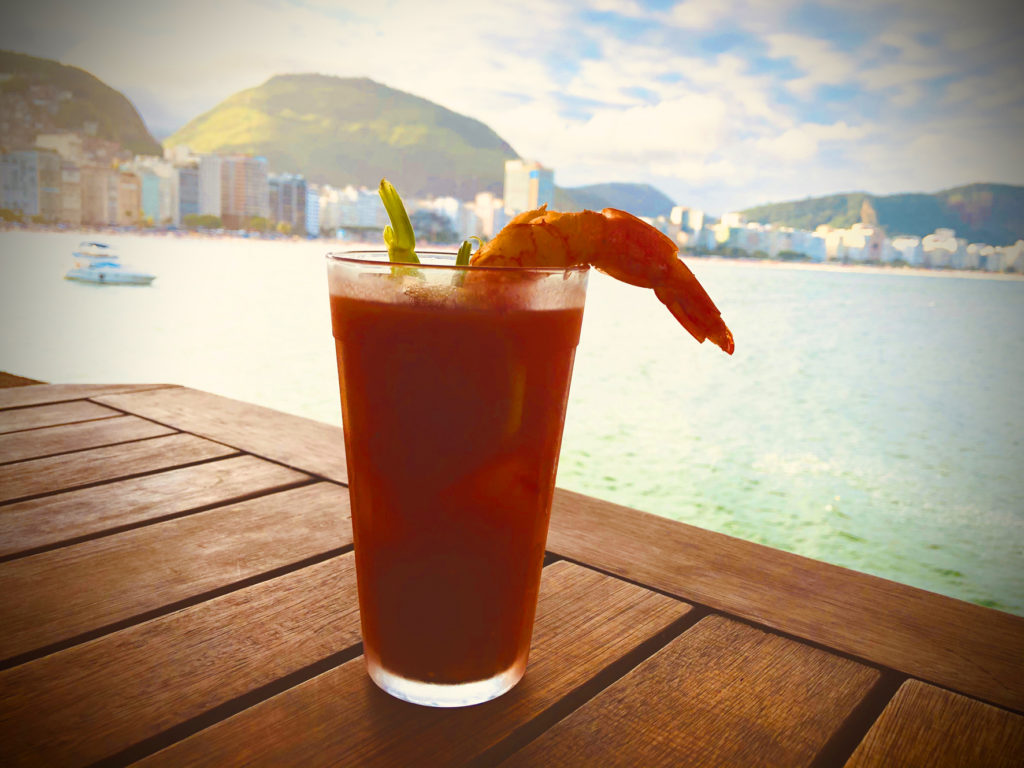
One unsurprising aspect is the way the big brewers bounce on the more successful small ones, and how, as everywhere, this is deeply resented by the rest of the craft beer world. There was prolonged booing at the awards presentation after the two days of judging when the “Best of Show” went to Cervejaria Colorado for its Guanabara, an imperial stout made with rapadura, unrefined whole cane sugar, which brings a smoky, earthy touch, and aged in umburana wood, from a tree (Bursera leptophleus) that grows in the Caatinga, a region of north-eastern Brazil (Edit — or maybe not that tree: see comment from Gail Ann Williams below). It’s a beer doing just what it should, using local assets to make a uniquely local beer, and it had already won more than 20 awards. But Cervejaria Colorado, once one of Brazil’s largest independent craft brewers, has been owned since 2015 by Ambev. The idea that the Evil Empire should be handed the top prize naturally infuriated many. However, as one of the organisers said (and it’s a line I shall certainly be stealing and reusing), if you could taste independence, then independence would win every time. But you can’t.
There is a while to go, I suspect, before you see a maracujá Catharina Sour on sale at half-time in the Maracanã stadium alongside the Skol, or whoever has the pouring rights in Rio’s premier football stadium. But there is plenty of drive behind Brazil’s craft beer scene, and judging by the amount of shiny new kit we saw in the breweries in and around Blumenau our hosts took us to, plenty of money as well. Brazilian beers are already winning awards outside Brazil. It is no great prediction to say that in the post-lockdown world we will all be seeing a lot more of beers from Brazil, not least its own home-grown style, the Catharina Sour. Make sure you spell it right …
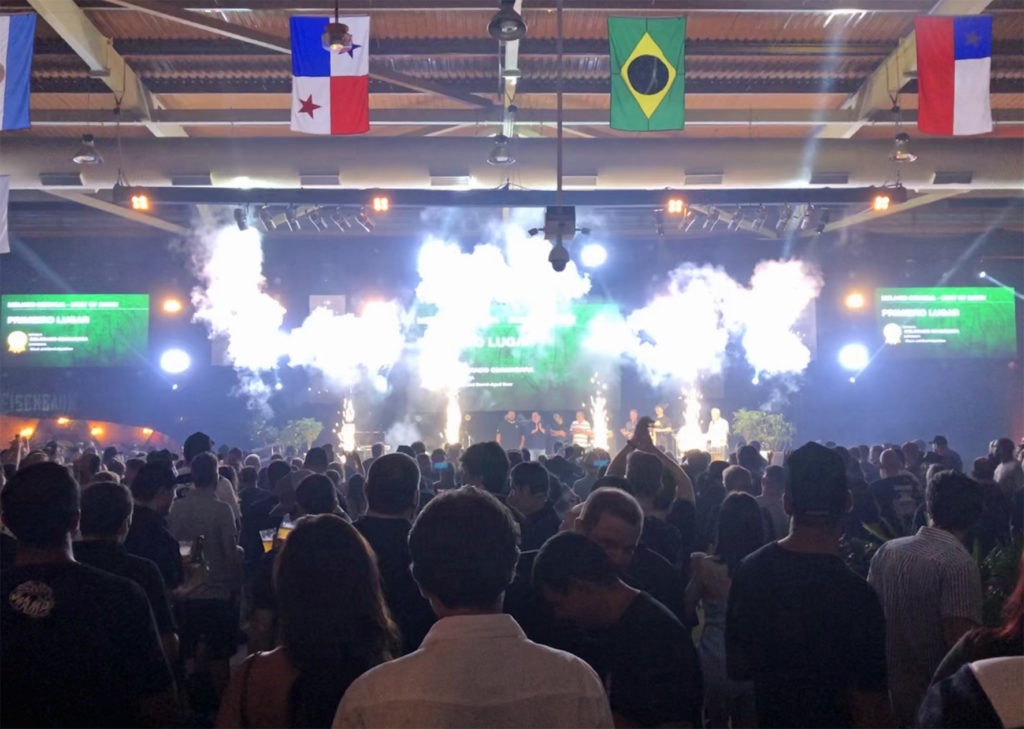
Many thanks to Doug Merlo, top Blumenau-based beer sommelier and home-brewer, for suggesting me as a judge, and for his enormous hospitality while I was in Blumenau, in particular in organising trips not just to local breweries but to a cheese-making plant and a cachaça distillery (both fascinating), to Fê Bressiani and all her colleagues at the Escola Superior de Cerveja e Malte for all her excellent organisational skills, and for ensuring everything ran as smoothly as possible, to Chris Flaskamp of the Tübinger brewery in Chile for being a great companion and translator, and to the lovely young ladies who wanted their pictures taken while standing next to me. You made an old man very happy. I had a wonderful time, drank loads of great beer, ate loads of great food, met loads of great people, and made, I trust, loads of great new friends. I do hope you’re all surviving the current world crisis in as good shape as possible.
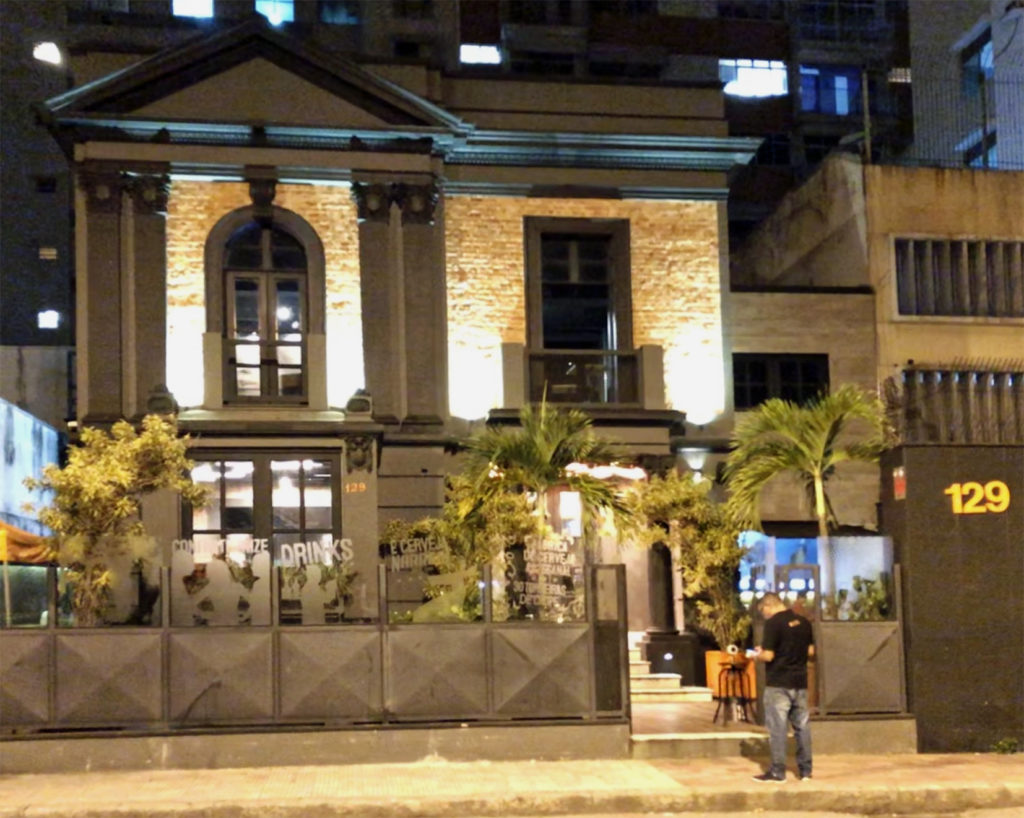
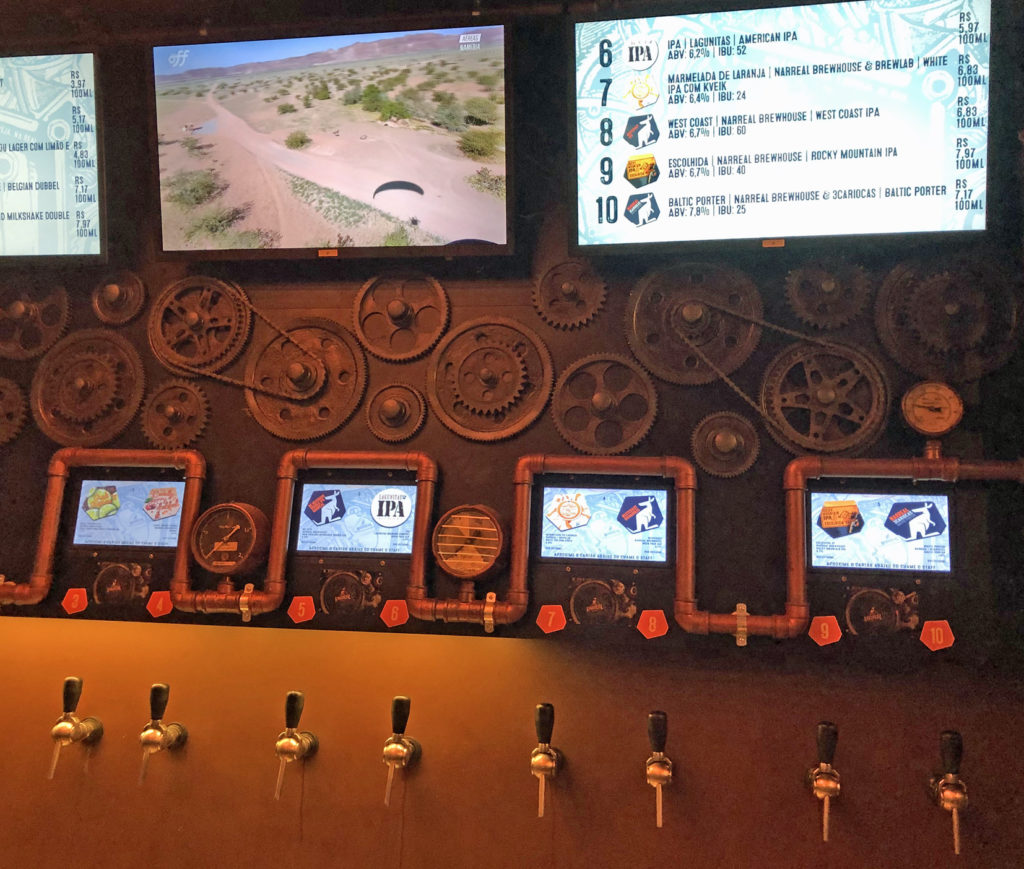


Kind as always, thank you, Martyn, for sharing your knowledge and being with us during that incredible week.
Koos van der Merwe was the butt of countless South African jokes from the old days of last century; much like “Paddy” (God bless him) was the butt of many Irish jokes. Most jokes were definitely non PC as currently perceived, but nobody then took offence and we all had a good laugh, even at ourselves.
Here’s a fairly harmless one.
Van der Merwe was on a business trip to England, his first venture from the African continent. On his first evening, in a posh London hotel, he finds himself in the bar at five o’clock for “cocktails” in the company of an American, a Frenchman and an Englishman. The very polished bar tender asks these gentleman what they fancy to drink.
The American: “I’ll have a martini on the rocks, not too much vermouth, with a dash of lemon and bitters thanks.”
The Frenchman: “Si vous pleit; a cognac with raspberry juice and pineapple.”
The Englishman: “I say old chap, a Pimm’s Martini, plenty of cucumber, not too much mint and easy on the Calvados.”
They all look expectantly at van der Merwe. Not wanting to let down the African continent, he boldly responds; “Ag, yus give me a draught beer with half a paw-paw in it”.
After reading Martin’s exposure to all the fruit beer in Brazil (or is it fruit juice with beer?), I cannot help wondering if old van der Merwe was a man before his time; a veritable beer prophet?
Myself, at 70+7, I still think real beer is malted grain, hops, water and yeast, and possibly a suitable adjunct. And to serve it needs a good bartender who can talk to you, not a robot. And then switch off your cell phone. Why else would you go to a pub?
Oras, se usamos lúpulos que trazem flavors de frutas cítricas, não há nada de errado ou ilógico em se usar as próprias frutas frescas.
Wonderful tale!
I was down to Blumenau to judge two years ago, and was similarly impressed with the creativity and enthusiasm of the Brazillian brewing scene! So much of what you wrote is familiar to me.
I do have one question (perhaps a correction).
When I wrote about Umburana, I did a lot of research that pointed to Amburana cearensis being the scientific name for both “amburana” and “umburana” trees, along with many other common names. (I stuck with Aburana) Some naming examples are cited in these:
https://jwaten.wordpress.com/2020/03/16/amburana-or-umburana/
https://www.mapadacachaca.com.br/en/articles/woods-for-aging-cachaca/
You’ll note that Brazilian sites will sometimes use the term Umburana and sometimes Amburana for this very beer. https://www.brejas.com.br/cerveja/brasil/guanabara-wood-aged
https://www.homemcerveja.com.br/colorado-lanca-sua-cerveja-mais-premiada-em-garrafa-a-guanabara-wood-aged/
So I’m curious about your ID of Bursera leptophleus. I also don’t see it on this list: http://www.theplantlist.org/browse/A/Burseraceae/Bursera/
cheers,
Gail
PS – Here are the two Umburana/Amburana stories I worked on with Steve Shapiro:
https://www.craftbeer.com/craft-beer-muses/american-brewers-fall-for-brazils-spicy-amburana-wood — with excess tech info and interview bits posted at:
https://beercurrents.com/2019/07/11/craft-beer-secrets-from-brazil-a-tree-called-amburana/
Thank you for that, Gail. According to this source https://species.wikimedia.org/wiki/Bursera_leptophloeos umburana is one of the synonyms for Bursera leptophloeos, as is imburana. I may very well be wrong about my identification of nthe wood used, though. A note has now been put in the piece directing readers to your comment.
[…] https://zythophile.co.uk/2020/05/02/catharina-sour-and-other-beers-in-brazil-in-those-long-vanished-t… […]
[…] Catharina Sour, and other beers in Brazil in those long-vanished times six weeks ago […]